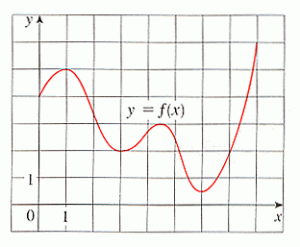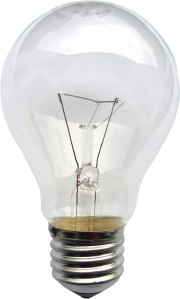Of all the topics in modern science, none is more mysterious than exactly what the heck the universe actually IS. How big is it? What’s outside of it? What’s the point?
I would love for any morsel of new insight into the universe to occur within my lifetime, but hey, it makes for great sci-fi in the meantime. Regardless, we actually know more about the universe than you might initially think. Specifically, we know what’s going to happen waaaaaaay down the line at the end of the universe, provided that nothing else catastrophic gets in the way. You can convey this end -of-the-universe concept by using the term “heat death of the universe.” The scariest part? Every second the universe exists is a second we’re hurtling towards its eventual death.
The heat death of the universe sounds complicated but it’s really a super simple idea. We’ve looked in previous posts at how things tend to get messier over time – clothes and books in your bedroom, smell molecules in house, and food coloring in a glass of water. All of these things eventually find equilibrium by being evenly spread out over their medium. We also know that heat does this – if you open a hot oven, the heat trapped in the air will slowly rise and disperse throughout the room. As it spreads out more and more, it transfers heat to the surrounding environment because heat can only flow from hotter areas to colder areas. Without us putting any work into it, anything that’s hot will automatically try to move out towards anything nearby that’s colder, with the end result being that if you open a hot oven in your kitchen, your entire kitchen will eventually reach the same temperature in every little nook and cranny. So it’s kind of obvious that heat dissipates, right? Well if we consider this heat to be increasing the “messiness” of whatever room it’s in, we can see that it’s actually following the Second Law of Thermodynamics quite nicely.
Second Law of Thermodynamics: In any process the entropy will either increase or remain the same.
In other words, if your room is messy, it’s high in entropy. Any energy you use to straighten it up also releases more heat, which makes the room messier because the once-concentrated heat from your body is now being spread out over a much larger area. So even when you’re cleaning a room to reduce its entropy, the end result is always, always, always, that you’ve increased the entropy of the universe as a whole.
This same rule applies to all the stars in the universe. Stars are essentially “burning elements like hydrogen and helium” and produce enormous amounts of heat as a result. But, of course, their supply is finite – any star that runs out of materials to burn will eventually collapse in on itself due to its very high mass and gravity. We could get into the life cycle of stars, but we’ll save it for another time. Suffice it to say that even star, including our own sun, operates under a time limit – when it runs out of stuff to burn, it’ll die.
But think about all the heat that’s being released from the sun! Huge amounts of heat that one second reside entirely within the sun are being dispersed all through the Milky Way and beyond, searching for colder areas. In other words, the entropy of the universe is also being increased constantly by stars. Now try to imagine a time when all the stars and energy/heat sources in the universe have expended their energy. Slowly, heat will disperse evenly through the universe until it is even distributed, just like food coloring in a glass of water.
Now, heat energy is essentially a wasteful by-product of doing work. When you go for a bike ride, you get hot and sweaty because your muscles are expending energy to move, and some of this energy is lost in the form of heat (since no process can ever be 100% efficient, all “burning” reactions result in some heat loss) This heat that’s lost to the surrounding area can’t be recaptured – what was once organized energy in your muscles is now permanently useless to humans as a fuel source. To simplify, let’s say that all processes in the universe are 90% effective, meaning they give off 10% of their energy as useless heat. After some unknown time period, we have less and less available energy to work with, and more and more of it is becoming heat energy that disperses.
Once all the energy in the universe is at maximum entropy (used up and disorganized), then there can be no further work or transfer of energy. In short, that means no life at all.
Of course, this is merely a theory, and the amount of time before this actually occurs is, for all intents and purposes, infinitely far in the future. You might also be interested in checking out other theories, such as “Big Freeze,” “Big Crunch,” and “Big Rip.” In all cases, however, we are pretty certain that the universe will end – a prospect that is made all the more fascinating and terrifying by our relative ignorance about just what exactly this universe is all about.







 You probably already know that plants get their water by absorbing at the roots. Water drains into the soil and the roots take it into the plant’s stem, and it moves upwards through the plant. You might notice a small problem called gravity here — how could a plant with no muscles move water upwards along its stem when the force of gravity is so much stronger in comparison? Plants actually have a few nifty tricks to get around their lack of muscles. The magic starts at the plant’s leaves, so we’ll check in there first.
You probably already know that plants get their water by absorbing at the roots. Water drains into the soil and the roots take it into the plant’s stem, and it moves upwards through the plant. You might notice a small problem called gravity here — how could a plant with no muscles move water upwards along its stem when the force of gravity is so much stronger in comparison? Plants actually have a few nifty tricks to get around their lack of muscles. The magic starts at the plant’s leaves, so we’ll check in there first. The same thing happens in a plant’s “veins” – As water is evaporating from the leaves, the water molecules attracted to those about to leave are attracted upwards, replacing the water just lost. Not only this, but just water will climb the sides of a glass, the same happens in a plant’s vessels — water bows out at the sides of the vessel wall and moves upwards against gravity!
The same thing happens in a plant’s “veins” – As water is evaporating from the leaves, the water molecules attracted to those about to leave are attracted upwards, replacing the water just lost. Not only this, but just water will climb the sides of a glass, the same happens in a plant’s vessels — water bows out at the sides of the vessel wall and moves upwards against gravity!
 There’s a fundamental concept of energy transformation in science that says any time you convert between types of energy, you lose some of it in the process. It’s like saying you can go to the casino and blow a thousand bucks on slots, and you might break even at the end of the day, but the time you spent pulling the lever is now lost. In terms of energy, we might say that if you drop a rock off a cliff, the energy it has when it gets near the bottom is mainly in the form of speed – you wouldn’t want to be standing under it, would you? It’s chock full of energy that was transformed from potential to kinetic (in this case, from its high position to its high speed during the fall).
There’s a fundamental concept of energy transformation in science that says any time you convert between types of energy, you lose some of it in the process. It’s like saying you can go to the casino and blow a thousand bucks on slots, and you might break even at the end of the day, but the time you spent pulling the lever is now lost. In terms of energy, we might say that if you drop a rock off a cliff, the energy it has when it gets near the bottom is mainly in the form of speed – you wouldn’t want to be standing under it, would you? It’s chock full of energy that was transformed from potential to kinetic (in this case, from its high position to its high speed during the fall).
 As the wire gets hotter and hotter, it eventually starts to put out light. This light energy is another manifestation of the wasted energy from this transformation process. But this is exactly the reason we use light bulbs in the first place! What we’ve essentially done is force energy into a conducting wire, force it into a bulb, and finally force it to splinter off into several kinds of energy that are observable in different ways. We can feel the heat from a light bulb, we can see the light it emits, and we can test the wire to see whether there’s still energy flowing through it.
As the wire gets hotter and hotter, it eventually starts to put out light. This light energy is another manifestation of the wasted energy from this transformation process. But this is exactly the reason we use light bulbs in the first place! What we’ve essentially done is force energy into a conducting wire, force it into a bulb, and finally force it to splinter off into several kinds of energy that are observable in different ways. We can feel the heat from a light bulb, we can see the light it emits, and we can test the wire to see whether there’s still energy flowing through it.